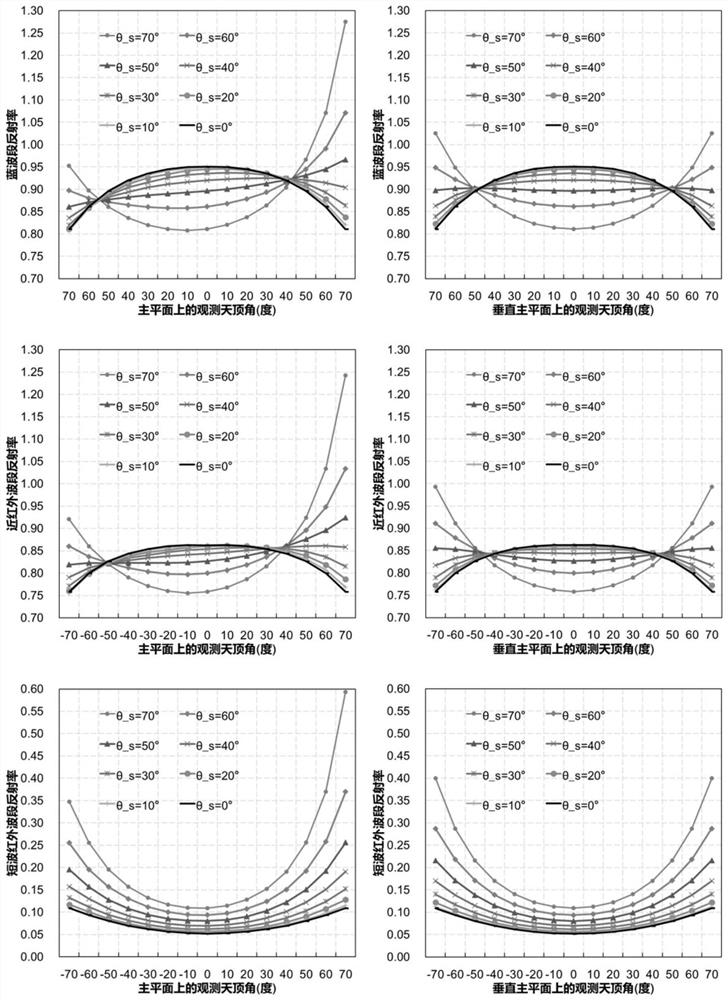Snow multi-angle bi-directional reflectivity inversion method based on satellite remote sensing data
A technology of satellite remote sensing data and two-way reflection, applied in complex mathematical operations and other directions, can solve the problems of long data collection time, large angle effect, low efficiency, etc., to eliminate terrain effects, overcome defects, and achieve high inversion efficiency. Effect
- Summary
- Abstract
- Description
- Claims
- Application Information
AI Technical Summary
Problems solved by technology
Method used
Image
Examples
Embodiment Construction
[0045] The specific embodiments of the present invention will be further described in detail by describing the embodiments below with reference to the accompanying drawings, so as to help those skilled in the art have a more complete, accurate and in-depth understanding of the inventive concepts and technical solutions of the present invention.
[0046] Such as Figure 1-3 As shown, the present invention provides a snow multi-angle two-way reflectivity inversion method based on satellite remote sensing data, comprising the following steps:
[0047] Step 1: For the given medium and high-resolution satellite data (Sentinel-2A multispectral image L1C level data), perform preprocessing (such as atmospheric correction processing) to obtain the single-angle two-dimensional snow cover surface of different bands under the assumption of Lambertian bodies Reflectivity.
[0048] Step 2: Use the C correction model to eliminate the terrain effect of the dichroic reflectance calculated acc...
PUM
 Login to View More
Login to View More Abstract
Description
Claims
Application Information
 Login to View More
Login to View More - R&D
- Intellectual Property
- Life Sciences
- Materials
- Tech Scout
- Unparalleled Data Quality
- Higher Quality Content
- 60% Fewer Hallucinations
Browse by: Latest US Patents, China's latest patents, Technical Efficacy Thesaurus, Application Domain, Technology Topic, Popular Technical Reports.
© 2025 PatSnap. All rights reserved.Legal|Privacy policy|Modern Slavery Act Transparency Statement|Sitemap|About US| Contact US: help@patsnap.com



